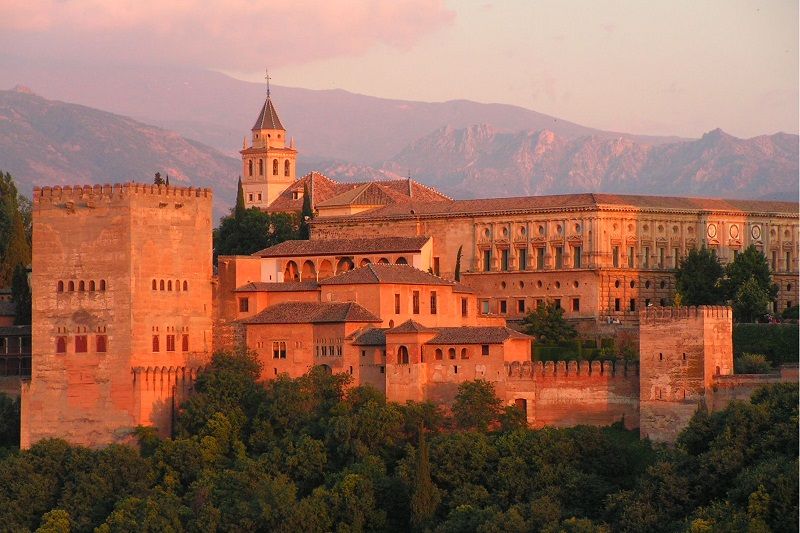Alhambra of Granada and its surroundings: the history
The red castle and the Andalusian Nasrid city built around it. Discover a little more of this monument that was nominated as one of the new seven wonders of the world.

The history of the monument and its surroundings
The red castle and the Andalusian Nasrid city built around it. Discover a little more of this monument that was nominated as one of the new seven wonders of the world.

The name of Alhambra comes from the Arabic language and means "the red one". You only need to look at the monument from one of the many viewpoints of Granada (San Nicolás, San Cristóbal or San Miguel Alto are the most popular ones) to understand why they called it like that. The walls of the fortress are bathed in an ocher red color, honoring its name.
Throughout history the Alhambra went through different epochs, from the moment of its construction until now. In the following, we will give you a short summary of the life of the monument over time.
The brain and heart of the ancient Nasrid city. The Alhambra of Granada is located on the Sabika hill, overlooking the balcony of the valley of Granada and leaving behind the Sierra Nevada. It is accompanied by the district of Albaicín and Sacromonte on the right-hand side and the rivers Darro and Genil on the left-hand side.
Based on the original Roman structure one started to extend the construction in the Sabika. After the end of the civil war, which made the caliphate of Córdoba the capital city, Granada became the capital city.
The founder of the Nasrids Al-Ahmar settled in Albaicín in 1238 and headed towards the hill of the Sabika during his visit. The reconstruction of the ruins begins and one starts to create the Alhambra which came to our time.
One created the fortress, the citadel and the palace and it reached its climax during the reign of Yusuf I and Muhammad V, during the 14th century.
After this period the city continued to grow due to the Christian reconquest, expanding the city and its walls until the end of the 15th century.
After the reconquest in 1492 the Alhambra was declared Royal House and great modifications and repairs took place.
In 1506 one begins with the construction of the palace of Charles V, in Roman Renaissance style.
Since the beginning of the 18th century, the Alhambra was finally completed, so that it remains virtually abandoned.
After Napoleon's invasion in 1812, the Alhambra was about to be completely destroyed.
In 1870 it was declared as national monument and from 1905 on, the current patronage originated which is in charge of the maintenance of this historical monument.
La capital nazarí se convirtió entre el siglo XIV y XV en una de las ciudades más prósperas de toda Europa. Era un centro cultural y comercial con una población de hasta 165.000 personas.
La ciudad se encontraba dividida por barrios, donde destacan el Albaicín, donde vivían los artesanos, la Alcaicería y antiguo barrio judío de la actual zona de Elvira.
Gracias a su situación geográfica y al relieve de la zona, dejando a Sierra Nevada como un muro, la ciudad pudo resistir más tiempo la reconquista y prosperar gracias al comercio entre Europa y Marruecos. Aunque la ciudad tuvo su punto álgido la política no paraba de debilitar la sociedad nazarí. Esto fué aprovechado por los cristianos para ir reconquistándola poco a poco.
Actualmente quedan multitud de edificios y vestifios de aquella época, como pueden ser el Corral del Carbón e incluso el antiguo trazado de las calles donde se situaba la antigua puerta de Bibrrambla.
If you want to know more about the Alhambra and if you wish to receive first-hand information, we invite you to get to know the monument on one of our guided tours. Travel with us through the history of all the parts of the Alhambra.